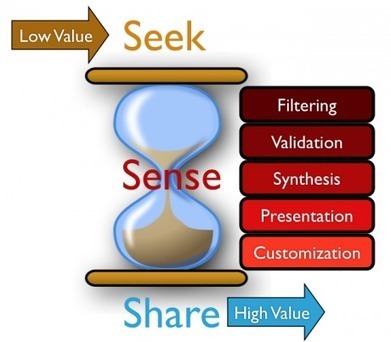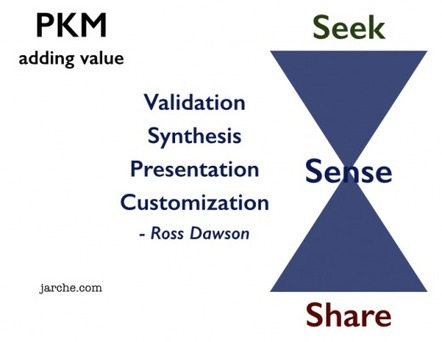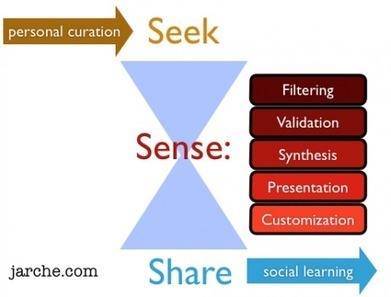Thinking of adding value should be the first stage in curation, PKM, or any professional online sharing.

|
Scooped by Robin Good |
If you are curating content, whether for the purpose of personal learning, or for creating a useful public information resource, your very first objective should be how can you add value to the existing information that you are going to work on.
Harold Jarche, does a wonderful job of explaining in simple terms what's the difference between sharing on social media, reposting or making your bookmarks public, versus the actual vetting and selection of each individual content item in light of the context and objective for which it is being curated.
The cherry on the pie from the author is an invaluable synthesis and bringing together of related items from Ross Dawson, Maria Popova and me, that allows you to scan and see at a glance 14 different ways in which you can truly add value to whichever set of information bits you are dealing with.
A great reference for anyone looking to improve the quality and value of its own curated work.
Useful. Inspiring. 8/10
Full article: http://socialmediatoday.com/hjarche/1964106/ask-what-value-you-can-add



 Your new post is loading...
Your new post is loading...
















Adding value can be as small as : what touched me in this article ? what resonates for me ? any sensible way to express your P.O.V. actually !
SyReach Notes now offers a full coverage of personal KM needs: Seek with integrated watch module and search engines, Sense with note and article edition, linking and knowledge building. Share by email or publish to Scoop.it selected resources linked to your articles!
Really thought provoking